There are certain points in life where you do not only simply make a decision and life goes on, but you have to make a decision how your life will go on. Those switching points decide literally the fate of one´s life, determine a path you go. It is clear that, once arriving at such a switch, that either way you decide to go will change everything. Those are rare, I´d say. For my own life I could name two or three of such deciding moments. But, looking back, I know for sure that the road I chose changed everything and that, had I chosen the other one, my life now would be a completely different one. Companies have those deciding switching points too. And it seems that French market leader Beneteau Group arrived at just one of these right now.
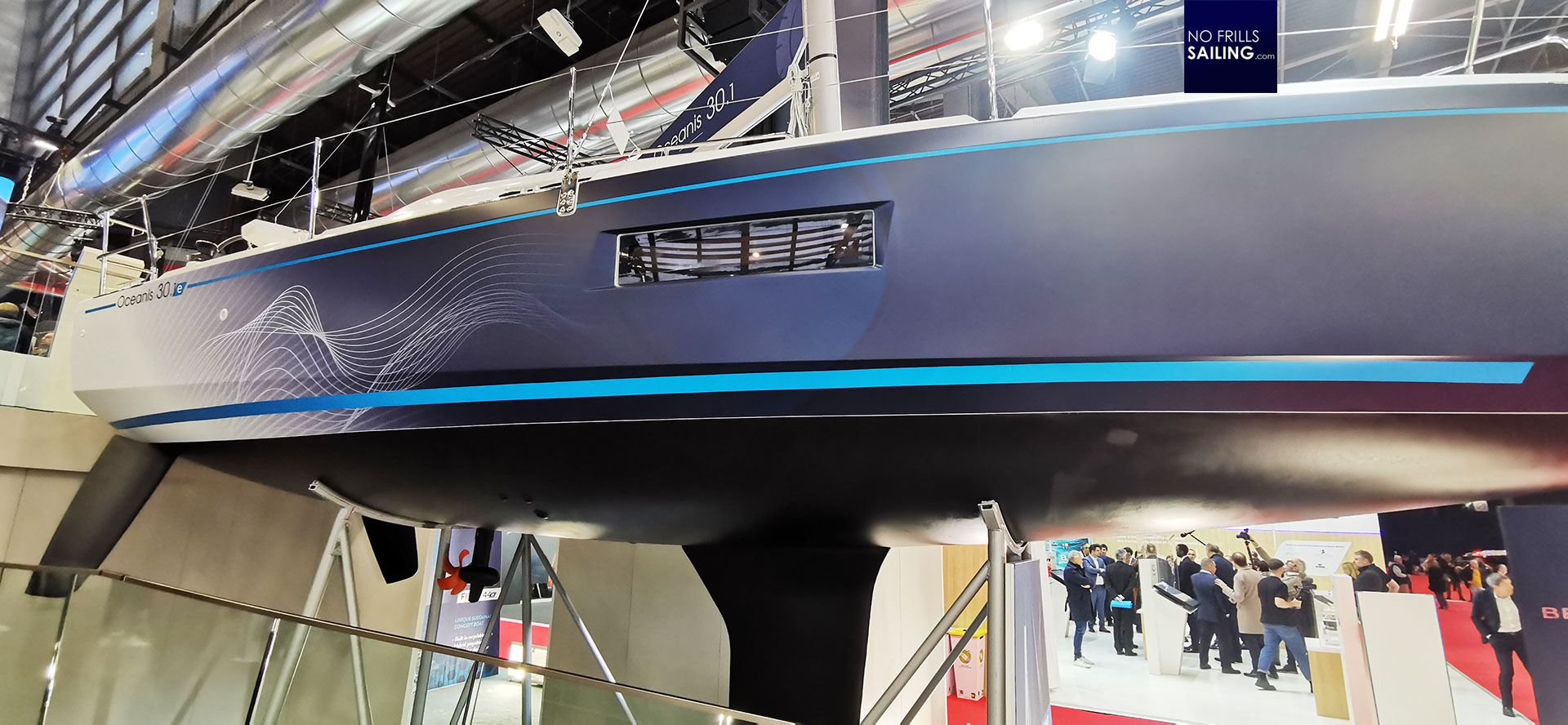
Months ago, back in Les Sables I saw a small boat tied up at the pontoon. Nothing special, just the familiar shape of an Oceanis 30.1. The smallest in the cruiser range. It was a prototype, all-electric, powered by a Torqeedo engine-battery-combination. The guys at Beneteau didn´t talk too much about it, just a testbed, they said. Nothing special. Well, it seems that they downplayed nothing less than a shift in paradigm not just for the brand Beneteau but for the whole Beneteau Group, with all their brands like Jeanneau, Lagoon and so forth. Being at Paris Boat Show, we all finally could see and grasp, what this will mean.
A fully electric sailing yacht
At their stand two sailboats are present, the Oceanis 30.1 and the new First 44. But both boats had their suffix “e”, which means “electric” of course apparent on the hull and a quick look underneath it revealed the news: No Diesel engine, fully electric. The Oceanis 30.1e has now entered series production after completing roughly a year intensive sea trials and testing. The option “e” is available for everyone as a normal option in the price list. This means a lot.
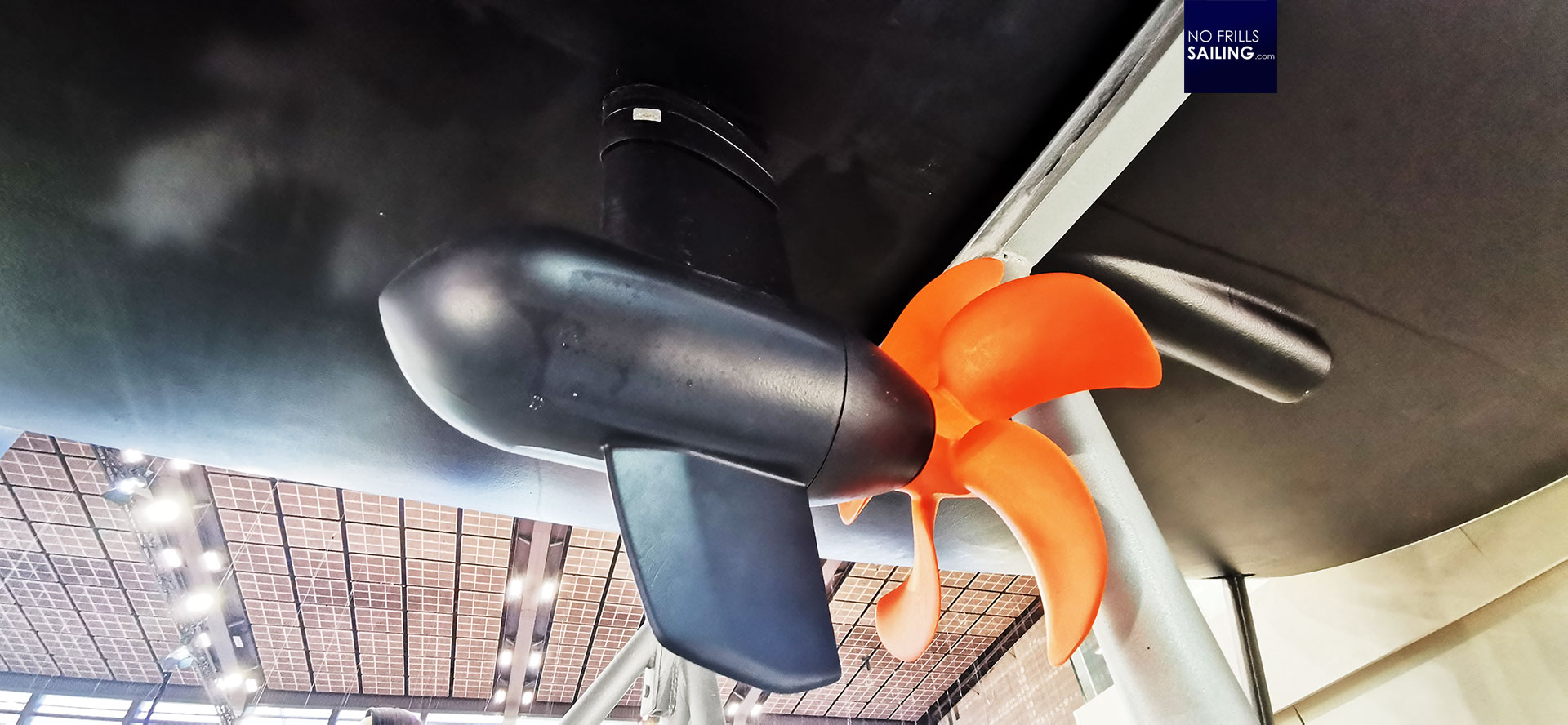
As market leader, many, many brands look what Beneteau Group is doing. Offering an industrialized, serialized option set with battery, drive and auxiliary equipment means that this is the first large production boat brand being confident and safe enough to do so. Excessive testing and negotiating with suppliers – ever more difficult in supply-horror-times like those nowadays – went ahead. And here we are, a shift in paradigm. Electric sailing finally arrived at the big names.
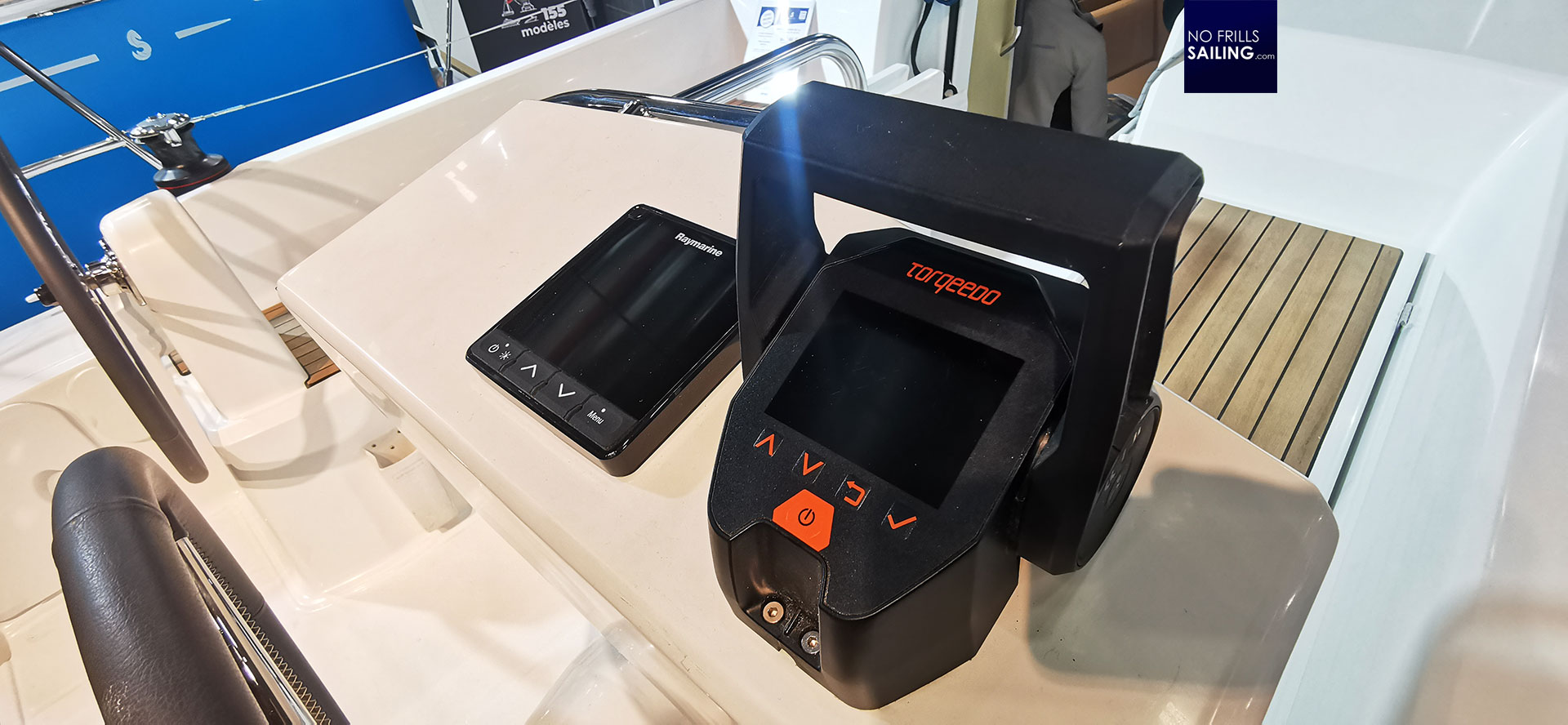
The new Oceanis 30.1e comes with a Torqeedo pod drive, Cruise 10.0 pod drive mounted underneath the hull. An electronic engine throttle is present on the steering console at the wheel´s helm station. Your initial reaction might now be: “Why are they doing it? This little boat, fully electric, where is the news? Nothing special …” Well, it might seem so at first glance and I must admit I found it silly when I saw her at first too, but there is a bigger story to it.
Completely changing everything?
The Oceanis 30.1e is a proof that everything is changing and that this shift has now also reached the boating industry. There was always a strive of certain companies to bring sustainability and eco-friendly solutions into boatbuilding. Mostly, small companies with innovative ideas, quirky guys presenting even more or less eccentric ideas. Now we have the big name entering the stage. And they mean business. Looking down into the saloon of the Oceanis 30.1e it seems that everything is the same, nothing new here, well, except the fact that now we apparently can have a dark floor for the white oak interior. Look twice …
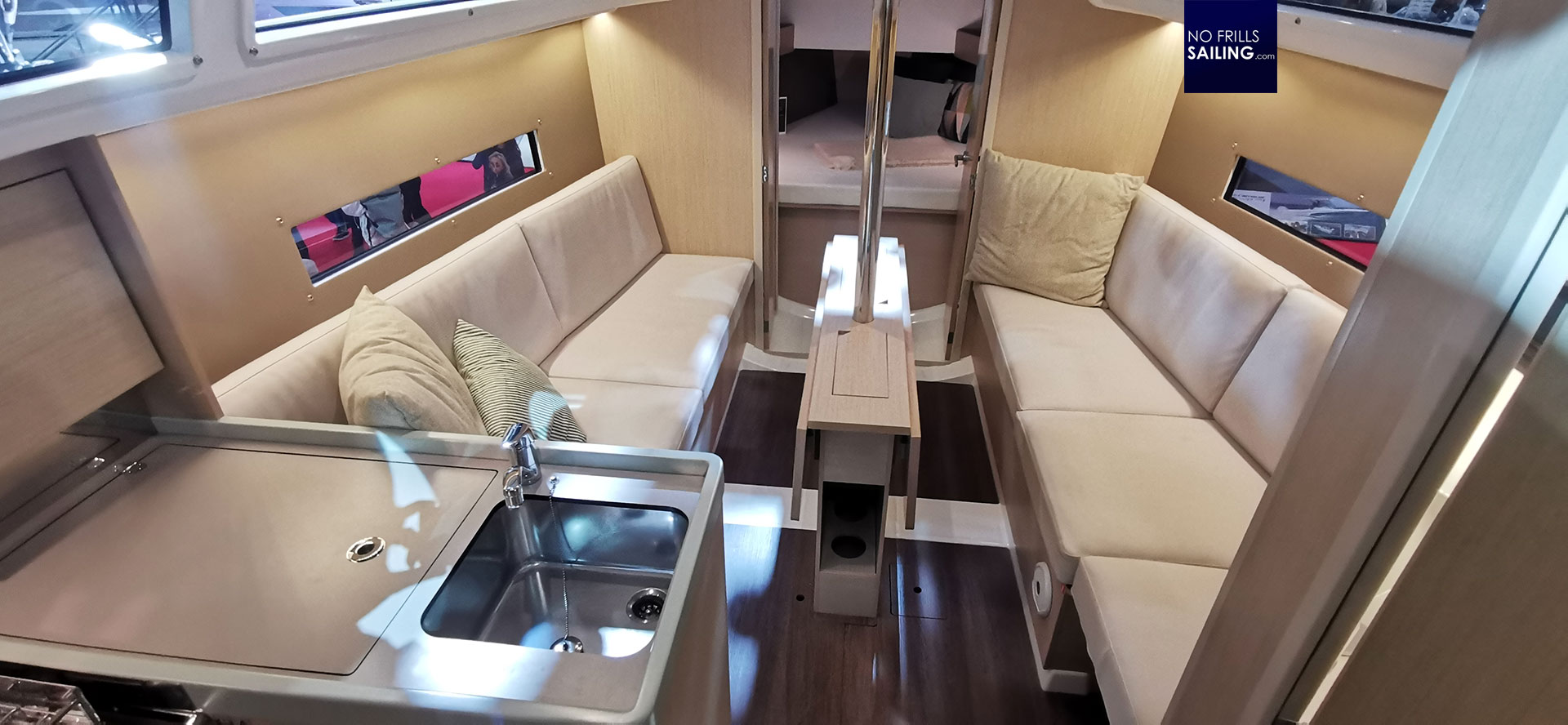
Folding up and opening the entryway, a gaping hole in the engine compartment is visible. Where once the rumbling internal combustion engine, a reliable Diesel by Yanmar, was fitted, a huge empty space is apparent. Just a bunch of cables and some bolts are visible. These are the fittings of the pod drive underneath and its feed with electric current. It looks awkward but here we are: A fully capable sailboat, a cruiser with all amenities, but no engine. Of course, getting rid of the Diesel engine means as well to rip out the clutch/drive, the shaft, the stuffing box, the cables and ducts, the fuel tank, the wiring and piping for the fuel, the exhaust system and such. A whole set of installations is permanently cancelled.
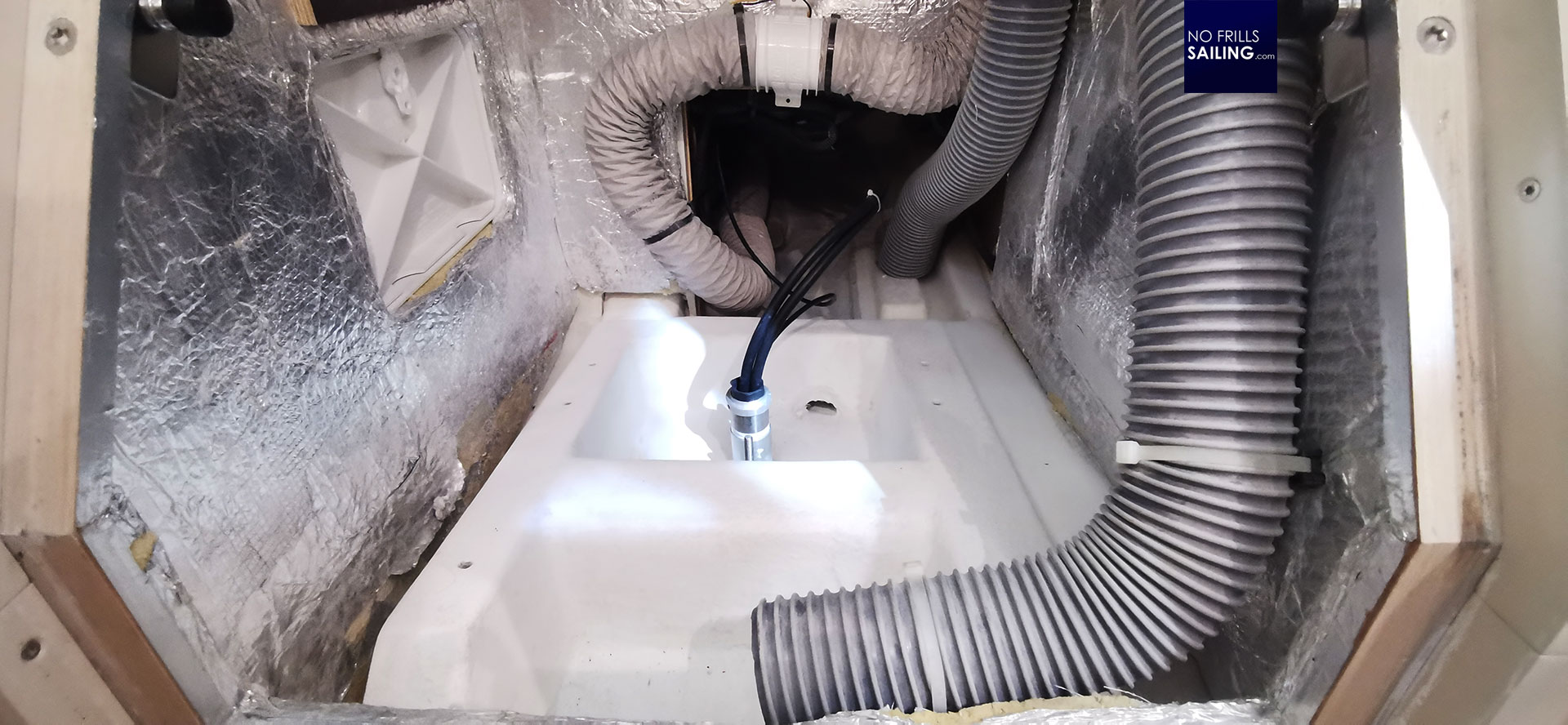
Electric propulsion frees up space. I instantly understand that this – although not visible in the Oceanis 30.1e – may change the way boats are designed completely. Just look at the huge empty engine compartment which is not only the space underneath the entryway but all the way back under the cockpit floor to the transom. Think of the new available volume inside that is now free for intelligent use for stowage, berth or cabin space. This Oceanis 30.1e is just an “empty” 30.1 but maybe second generation fully electric sailboats, specifically designed for “e-sailing” will make use of this new volumes.
Bolstering the collaboration with Torqeedo
I check for the fuel tank, which of course is not installed. Back in the cockpit stowage (which is huge on the 30.1 even with Diesel tank), underneath a floorboard, I discover the powerhouse of the boat. Two large Lithium batteries by Torqeedo: WH 48-5000, the same I used to draw current from in my “old” GEKKO. Two of them, some will start to count wattage and other data, that doesn´t feel impressive at all. And it doesn´t, compared to Diesel, you are right: Beneteau says that the range of the 30.1e will be around 12 nautical miles under cruising speed in normal sea conditions.
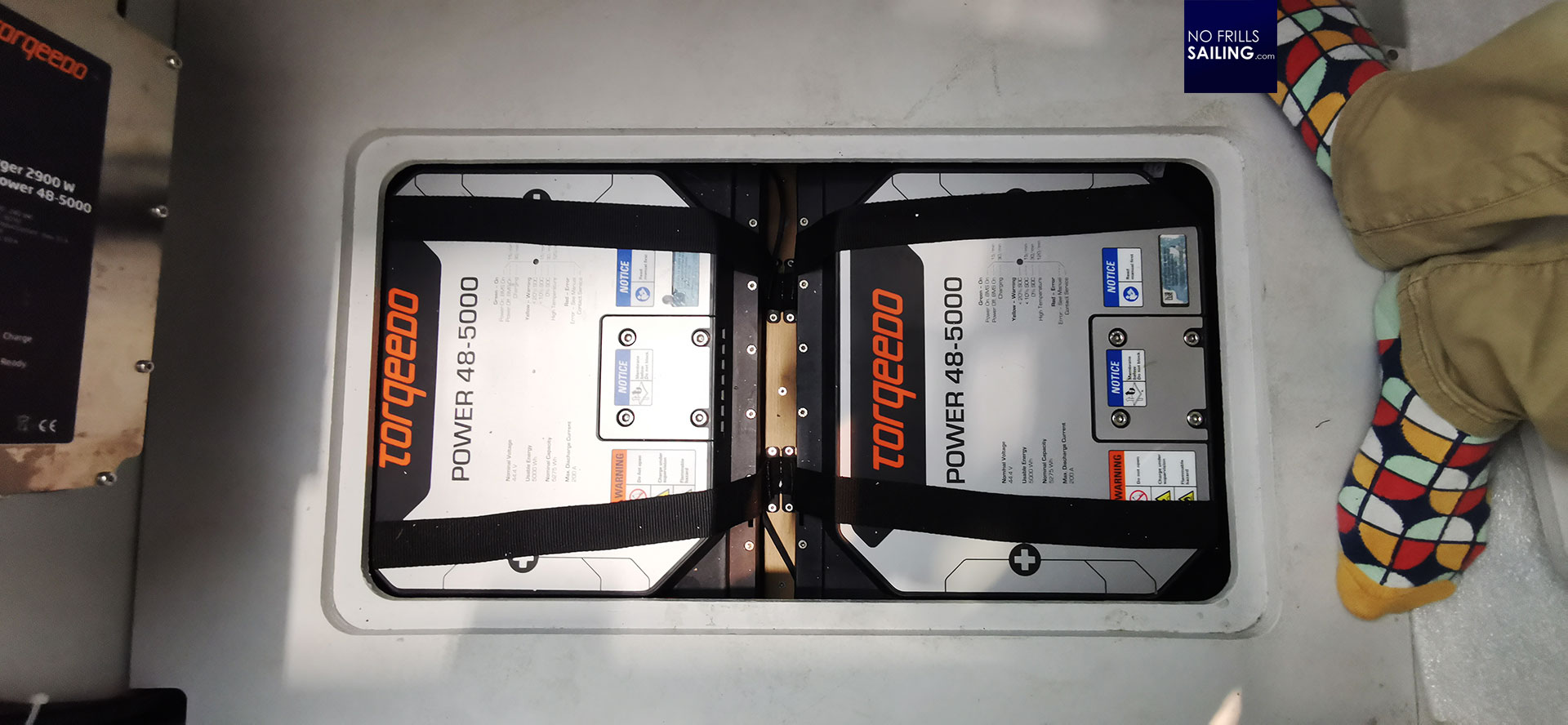
This is why the 30.1e is rated CE category C, which means its usage is limited to inshore sailing, big lakes and alike. 12 miles seem not impressive compared to 80 or 100 miles with Diesel. Sure. But it is not intended to substitute the offshore version nor is it advertised as such. The 30.1e is aimed at weekend and daysailing skippers, taking their boats out for inshore sailing, being back at the marina each evening. In this, 12 miles is more than appropriate to cast off and come back to the jetty. For the time in between, well, it´s a sailboat, isn´t it? The only thing that makes me struggle is the choice of Beneteau for Torqeedo. Their products are great, no question, but the service is, let´s put it mildly, very capable of development. Maybe a partnership with such a giant like Groupe Beneteau can do some good by exerting pressure here.
The need for a new type of skipper
Electric sailing, and I know from my own experience of two seasons sailing GEKKO, needs a new kind of skipper. Having this limited range plus the very precise data produced by the engine, like “XY miles range left at current speed” or “XY minutes left with current taking of wattage” require much more mental work by the skipper. You cannot switch on engine and drive the boat carelessly for hours anymore. You will have to be clever, you will have to calculate and decide, you will have to use your brains much more. Which, in turn, can be a good thing as well for sure.
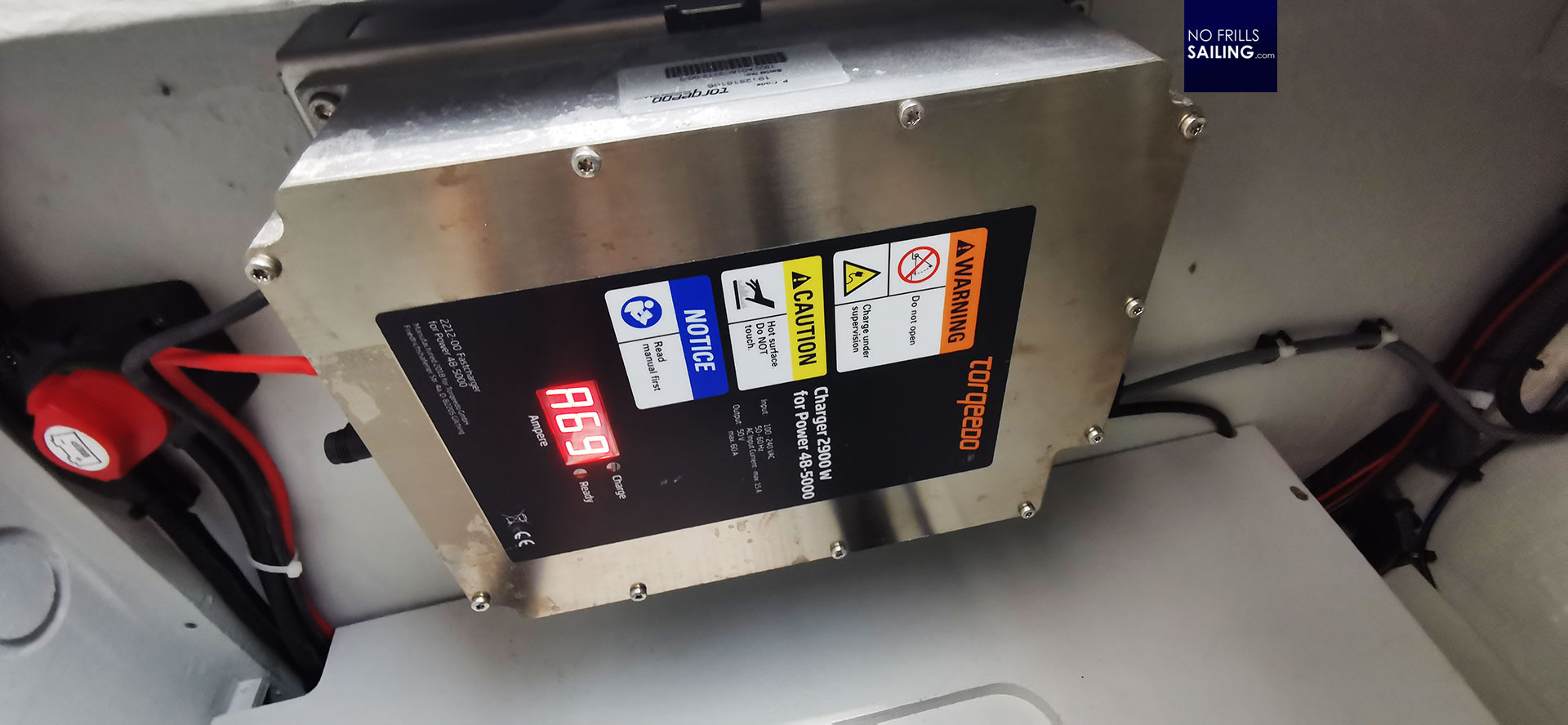
I am sure that the 30.1e will be a commercial success for inshore sailing. Since many (at least here in Germany) communities have launched laws to protect the local water bodies, on many lakes combustion engines aren´t allowed anyway. Political pressure and statutes on the one hand, societal pressure on the other will inevitably make companies offer electric or hybrid boats in any case. I myself notice a significant increase in demand for “green” sailing. I hate this “green” label and I am happy that the guys at Beneteau design department chose not to apply any green stickers on the boat, since this isn´t just a greenwashing PR-stunt. The 30.1e is just the beginning.
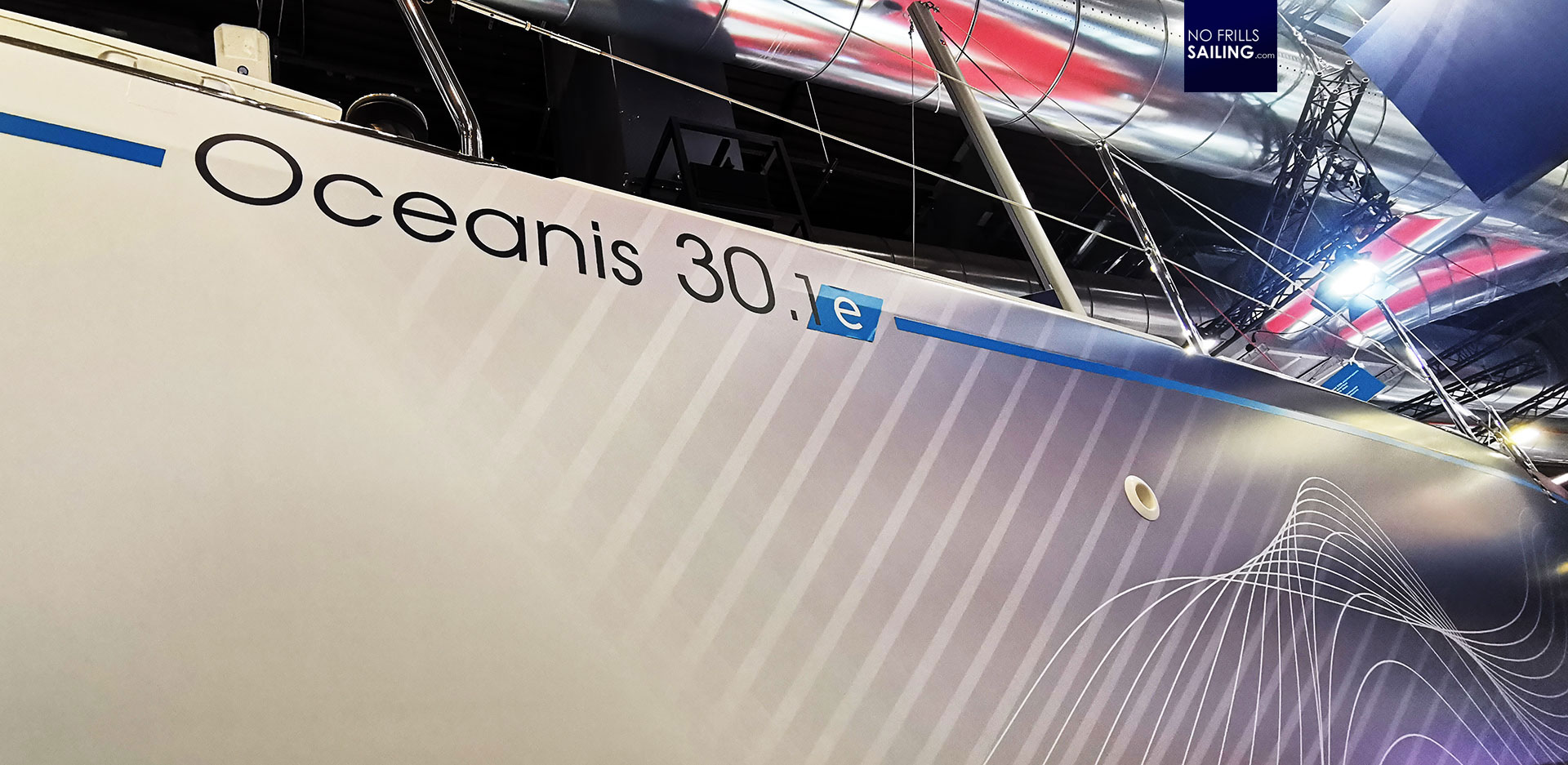
E-sailing won´t be limited to CE category C, for sure. It´s a train that has left and is on track. These projects aren´t small byproducts just for gaining good press citations and make nice pictures with CEOs and politicians in front of them. Beneteau, the whole Group, decided to be the forerunner of starting to shift a paradigm, the are going in full force. I leave the Oceanis 30.1e and board the other boat on display, the First 44e – and here I can see the whole picture, the next level. The advantages, the benefits and of course the price for it all – we will explore this in detail in another article, stay tuned.
You might as well be interested in these related topics:
Is this my new sailboat? Considering the Oceanis 30.1
Sailing Sweden: The 450 miles trip with the Oceanis 30.1-prototype
Fitting of a Torqeedo Cruise 4.0
